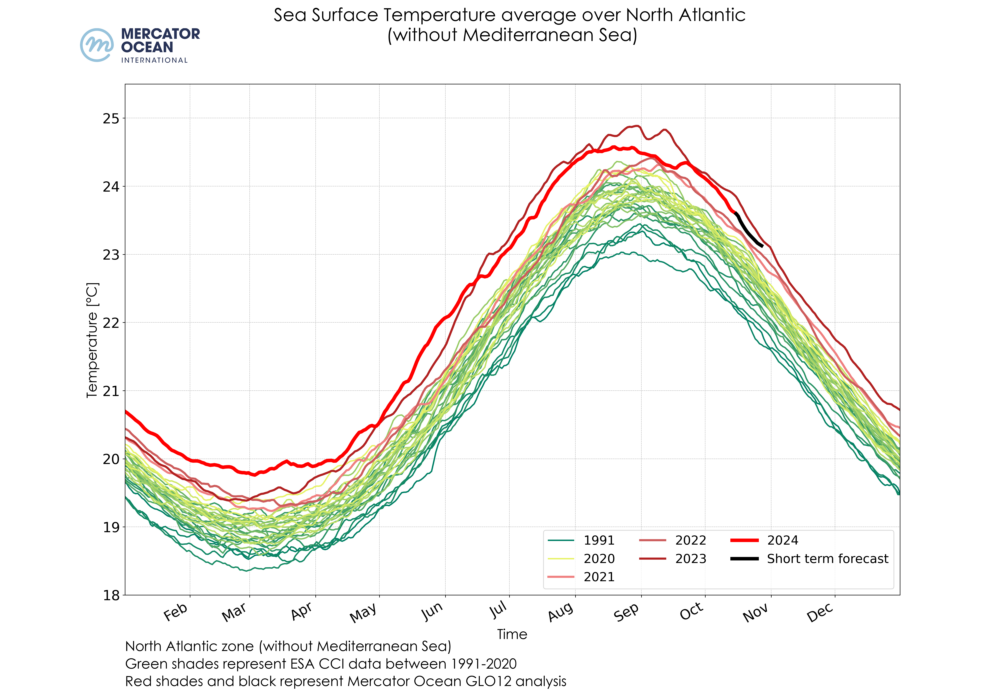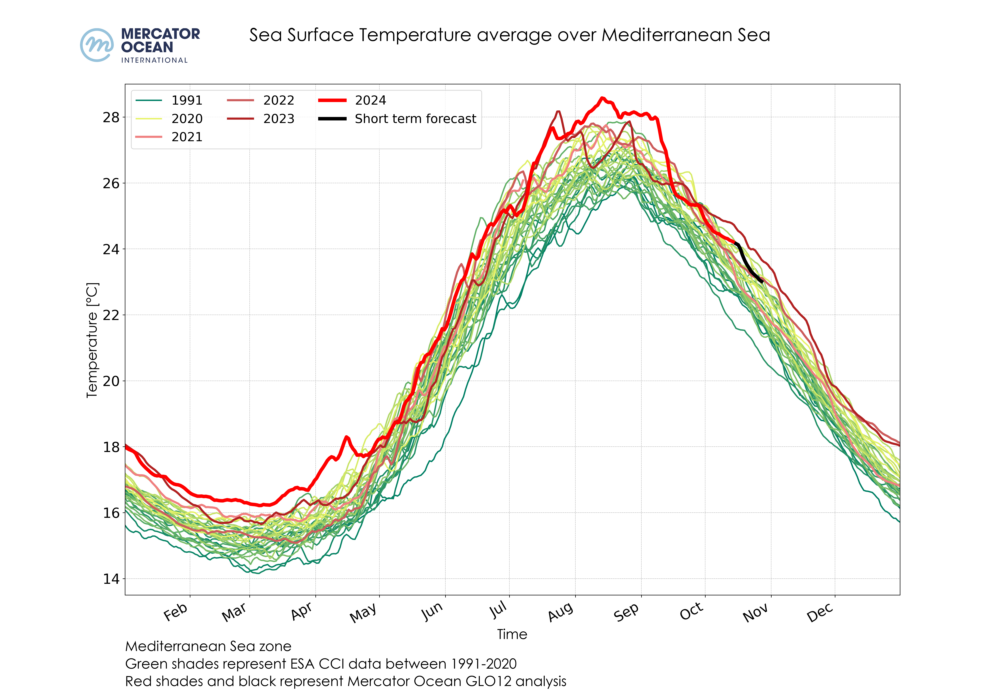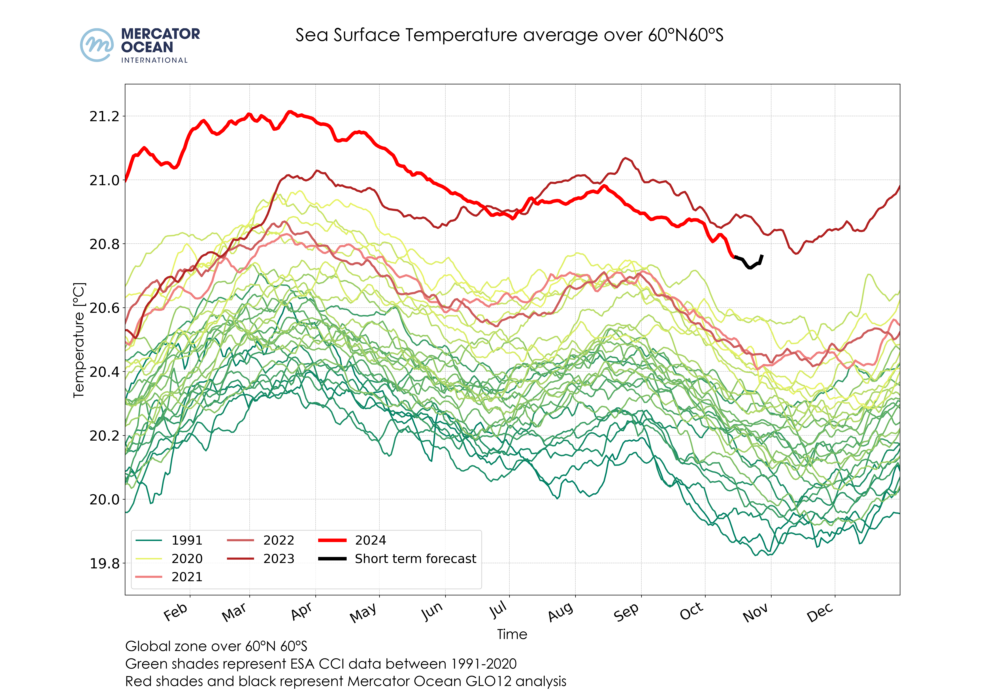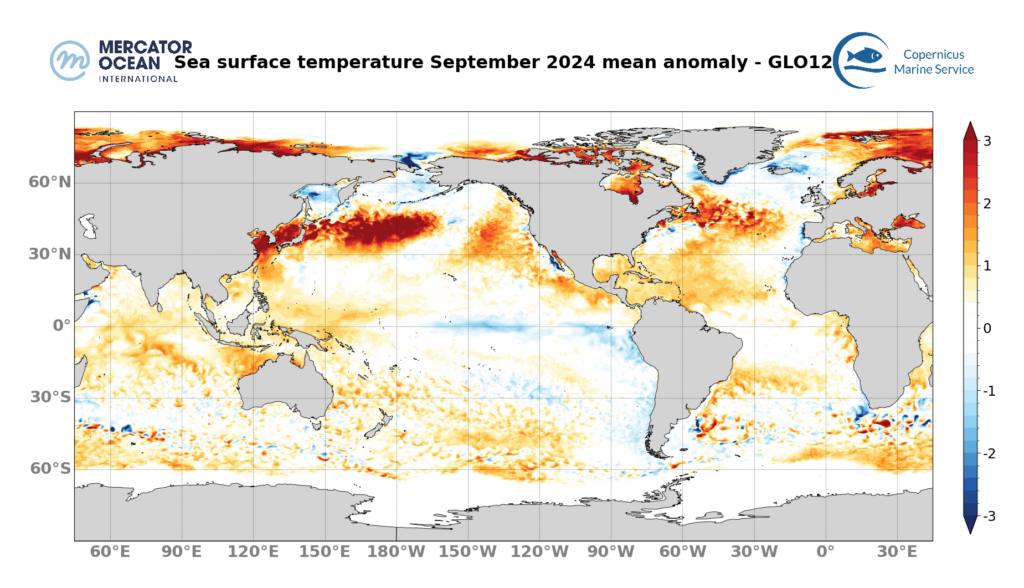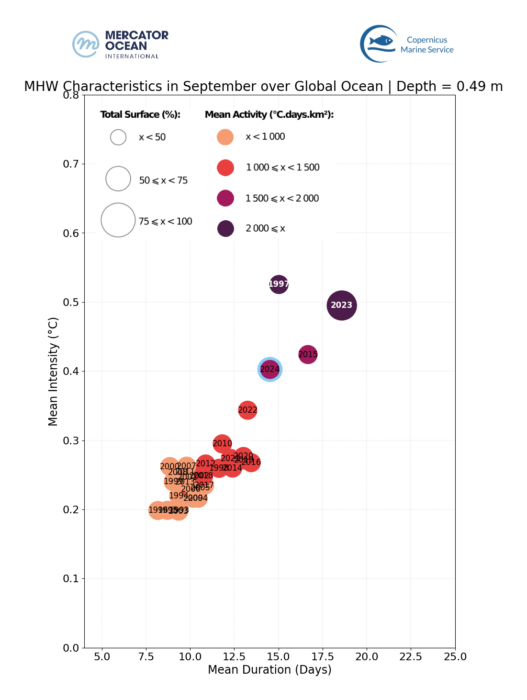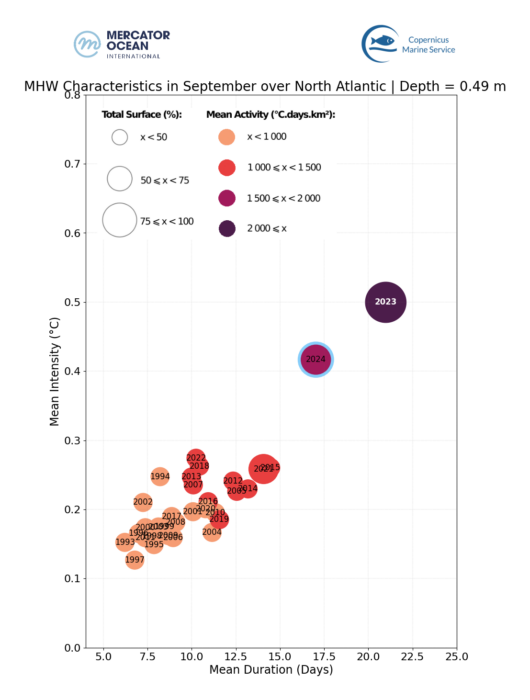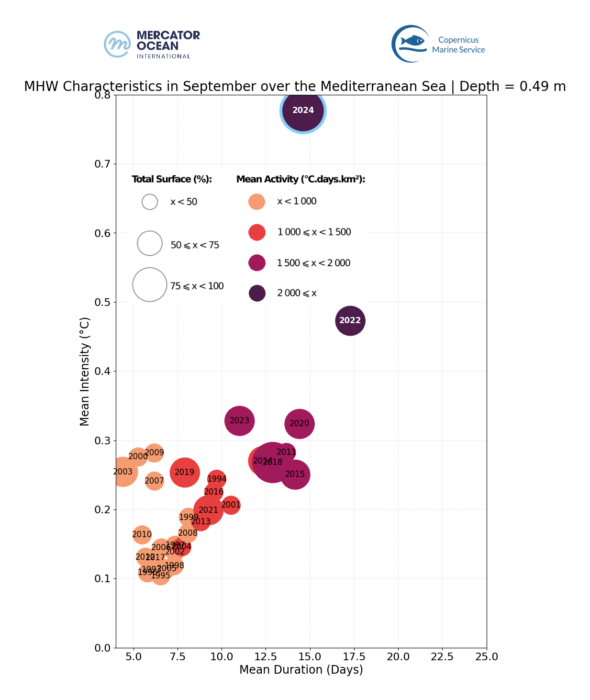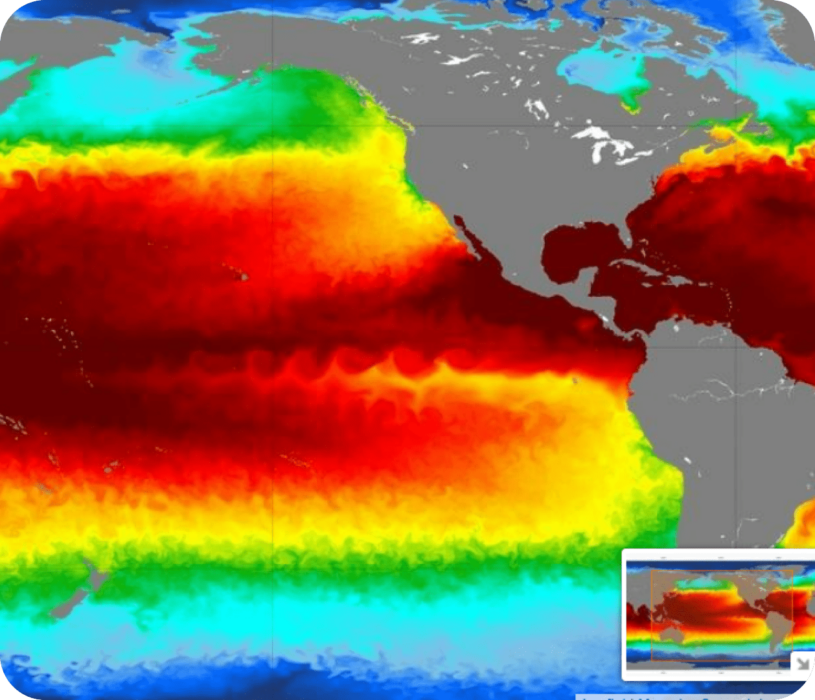A warm September
Sea surface temperature averaged for the North Atlantic Ocean (left), the Mediterranean Sea (center) and the global ocean between 1991-2020 using ESA Climate Change Initiative (green shades), and between 2021-2024 (red shades) + forecast (black) using MOi GLO12 analysis.
- September 2024 was a warm month overall with regional records.
- At global level, September 2024 was the second warmest month on records (after August 2023) with a monthly mean value of 20.87°C.
- This was also the case for the North Atlantic basin, with a mean temperature of 24.3 °C – the 2nd warmest month after September 2023 .
- For the Mediterranean Sea, temperatures reached a record high with a monthly mean of 26.42 ºC – higher than the previous record of 26.27 ºC set in 2020 and 2022.
Ongoing marine heatwaves: 30 September 2024
Long warming events may induce important stress on marine ecosystems. In this section is shown the ongoing marine heatwave events on September 30, 2024, and when those have initiated.
- 28.3 % of the global ocean (between 60°S and 60°N) were affected by Marine Heatwaves on the 30th of September.
- The majority of these MHWs developed recently, with 18% of the global Ocean (between 60°S and 60°N) affected by MHWs less than 1 month old and 3% by event between 1- and 2-month-old.
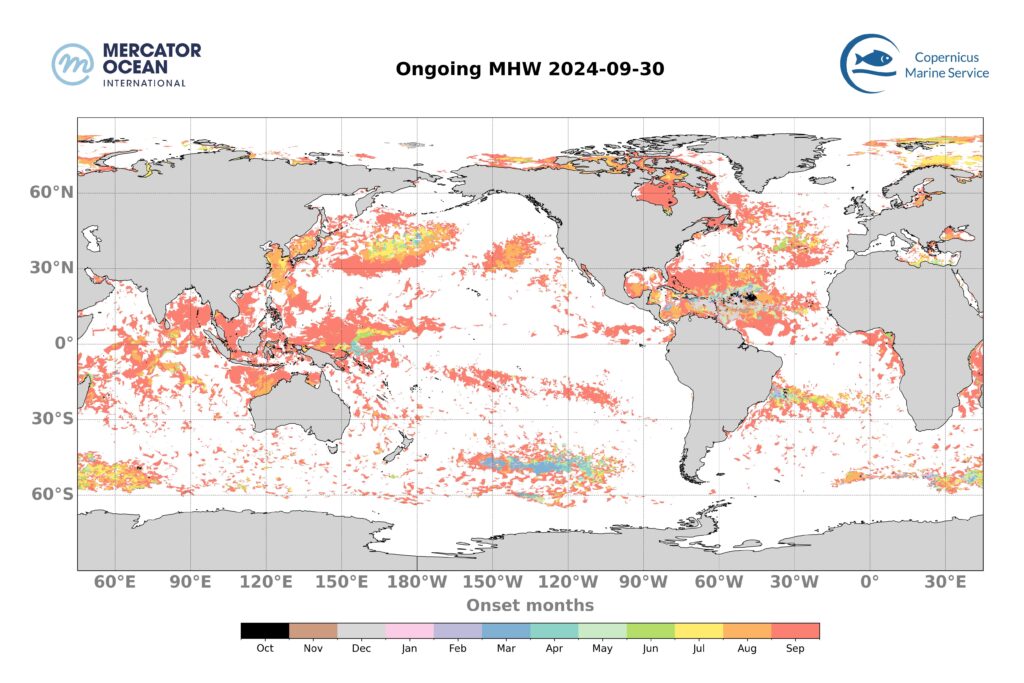
Total surface exposed to marine heatwaves (October 2023-September 2024)
The surface occupied by marine heatwaves is monitored daily. Below is shown for the past year (since October 2023), the proportion of the global Ocean (between 60°S and 60°N) exposed to marine heatwaves. In grey is highlighted the marine heatwave condition evolution over the past September 2024.
- The total surface for September 2024 (black line) continued a decreasing trend reaching the lowest level by mid-September (25.5%). By the end of September, the extent increased to 28.3 % of the global ocean.
- In 2023, the minimum extent occupied by MHW was reached earlier in the year (in July, ~27%), then progressively increased and reached 32-34% during September. The peak was attained in early January 2024 (42%).
- The maximum surface of marine heatwaves occurs during January and February, during summer season in the southern hemisphere (period of higher marine heatwave occurence), which in turn contains a larger proportion of ocean than its northern counterpart.
- The reduction in total surface can be explained by a predominant drop of strong and severe marine heatwaves (in orange and red). In contrast, moderate categories have remained stable over the month (in yellow).
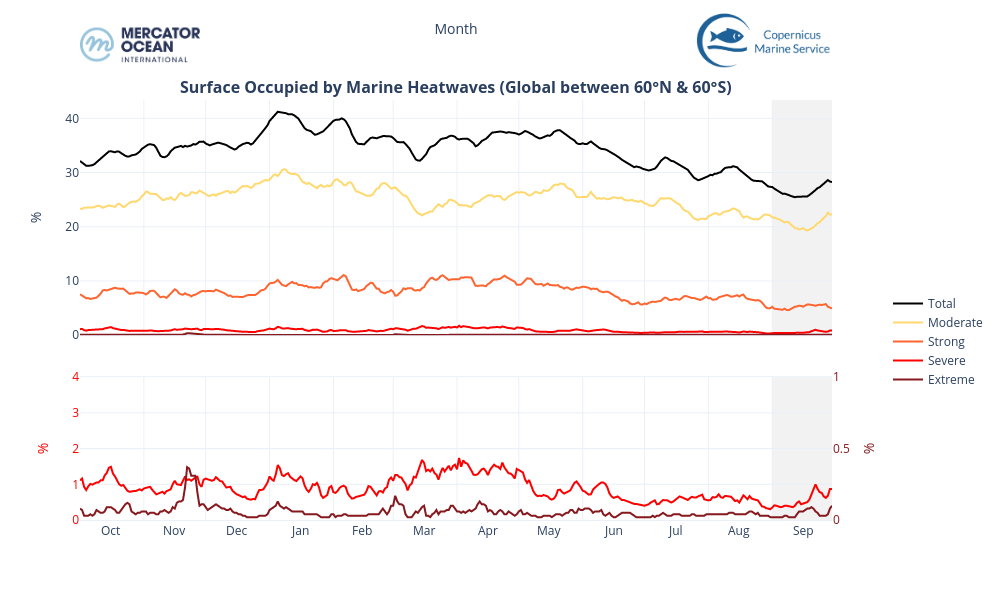
European Zone
For the ocean region of Europe, including the Mediterranean Sea and the North Atlantic eastern coast (see extent in map of ongoing MHW above), the 3rd period of strong marine heatwaves of 2024 which started in July, peaked in August, and remained very high early September (29%), to then decline rapidly to 13.4 % of the study area by the end of the month.
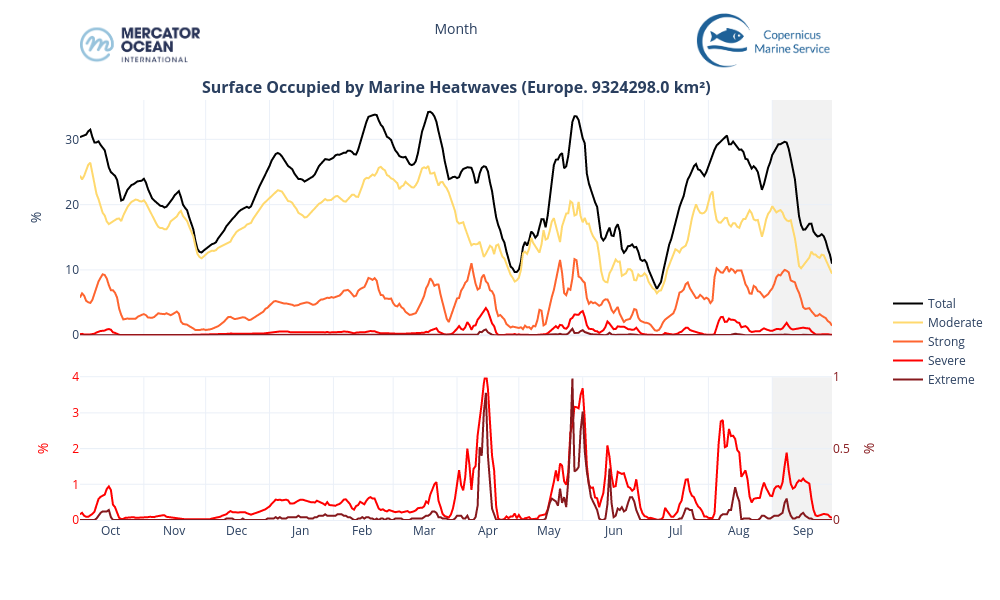
Total number of Marine Heatwave days for September 2024
Surface of the ocean in marine heatwave conditions for at least 1 day : 20.54 %
Surface of the ocean in marine heatwave conditions during the entire month : 0.39 %
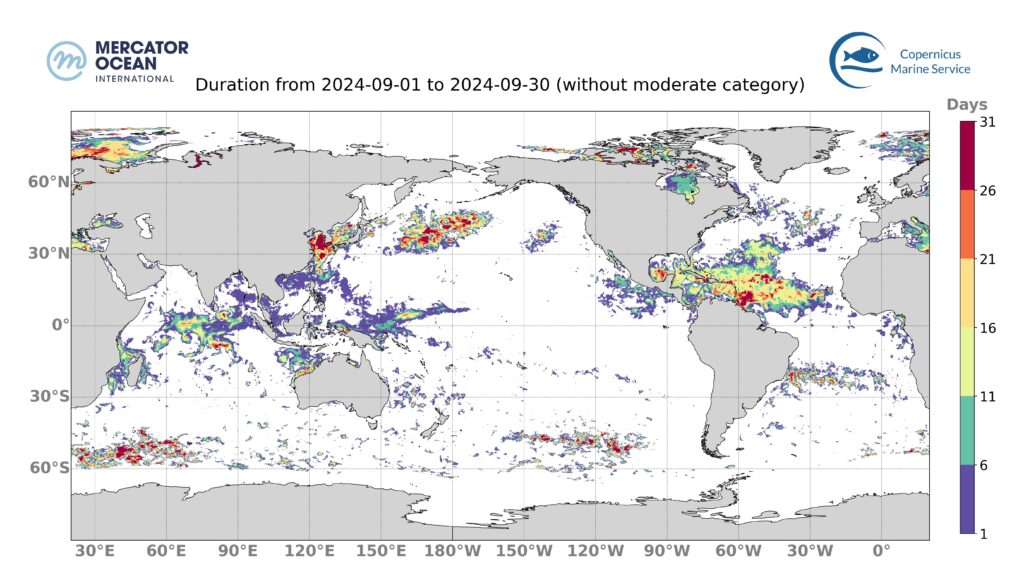
September 2024 : a month of extremes
Mean duration and intensity of marine heatwaves in September months between 1993 and 2024 for the global Ocean (left), for the North Atlantic Ocean (center) and the Mediterranean Sea (right). Satelite measurements were obtained for the 0.49 m ocean surface layer.
- The MHW statistics (MHW duration, intensity, occupied surface and activity) for September 2024 are compared to Septembers from previous years (since 1993).
- Linked to unprecedented mean daily temperatures in the first half of September in the Mediterranean Sea, a MHW record is observed in terms of intensity, activity and extent for September 2024, surpassing the record in September 2022 for intensity and activity, and September 2018 for mean extent.
- In the North Atlantic only, September 2023 was more extreme than September 2024. At global level, September 2024 was the 4th most extreme September month.
About the bulletin
Mercator Ocean International (MOi) publishes a monthly surface temperature bulletin reporting on mean temperature and marine heatwave conditions for the month just passed. It includes:
- Mean temperatures for the global ocean, the North Atlantic and the Mediterranean Sea together with anomalies.
- for regions of the ocean in marine heatwaves situation the time this event started,
- the timeseries showing the total surface occupied by marine heatwaves globally and for the European region,
- and the total number of days of exposure to marine heatwave during the month (including only strong and higher intensity categories).
The results are obtained using the Copernicus Marine Service global analysis system.
*Image citation: European Union, Copernicus Marine Service Data 2024 I © Mercator Ocean
All images in this article can be used freely and should be cited with the information above.

